Join the visit of our Technology Expert Santeri Saarinen to Barcelona! Here he recounts the visually rich details of the event and his impressions of the technology exhibits, as well as his personal experiences on the trip! The article consists of four parts, read on to find out about Day 3!
Text and images by Santeri Saarinen
Day 3 – Robotdogs Everywhere
I started the third day of the event by listening to a great discussion on virtual avatars and recreating actual people, by hand or with AI. Muki Kulhan, Barnabas Takacs and Roberto Iacoviello discussed the topic while presenting also a great use case about recreating the likeness of Maria Callas. Barnabas reminisced on the recreation of Marlene Dietrich in 98-99, as the first “real” virtual human, and how the possibility of recreating humans is kind of the ultimate challenge for Hollywood. Roberto reminded everyone about the uncanny valley, where people have a sense of rejection, when a virtual human is very human-like, but something feels off. But as we see with lot of the virtual influencers, we’re getting over the valley slowly. People are starting to like and sympathize with their virtual counterparts.
AI offers great opportunities for virtual characters. Companies can exploit archives of material we have on old actors and other performers. Doing some image restoration first and then building the character based on that imagery. Tools like Meta Human can assist with this, allowing the end results to be extremely high quality. The speakers identified similar issues though that had been discussed in other sectors earlier in the event. There’s a great need for standardization. There is no regulation currently, whoever can build models based on old images. Who actually owns the likeness of someone’s face? And in the end, when shooting a film, is a real human easier to work with than a virtual actor?

Discussion on synthetic humans
CyberDog 2 by XIAOMI
Another common trend around the event was of course robotics. But it seemed that many were opting for robot dogs. We saw the launch of Dynamic 1, AI robot dog from Tecno, designed to mimic a real-life dog. We saw the dancing CyberDog 2’s from XIAOMI, which allowed for open source programming of the robots. And some more cyberpunk looking solutions like the Vision 60 Q-UGV from Alisys and Ghost Robotics, which at least to me would have plenty of more interesting use cases than just the dancing puppy that can go down the stairs.

Dynamic 1 by Tecno
Vision 60 Q-UGV by Alisys and Ghost Robotics
During the event, GSMA Intelligence also unveiled the 2024 Global Trends Report. We heard how 5G, despite its issues was still the mobile network generation which had had the fastest mobile broadband uptake globally. 5G advanced would continue to grow this year, with some of the top use cases including 5G multicast, low cost IoT and satellite integration. Fixed Wireless Access was up 55% in 2024. Private wireless networks were growing slowly, but there was a lot of demand in the sector. For companies providing the connections, the challenge is how to monetize customers’ needs. They want more video and music streaming, multiplayer gaming and live sports events. But how to turn these into profit is a big question for teleoperators.
Another big topic in the report was of course generative AI. Most interesting data was related to the business impact, and which operations GenAI had been affecting. The clear winner was troubleshooting, followed by threat detection and mitigation, personalized service creation, increased traffic demands and network optimization.
Another big topic in the report was of course generative AI. Most interesting data was related to the business impact, and which operations GenAI had been affecting.
Aside from dogs, there were plenty of cars as well. Ranging from Deloitte’s automated driving robots powered by 5G to Rhea’s autonomous barista vehicle on the AI controlled side. MediaTek showcased their concept for in-car entertainment system and the Dimensity Auto Cockpit inforsystem for the driver, both powered by AI to provide real-time accurate information and scalable, integrated systems. Another in-car system on display was Harman Automotive’s Ready Connect, their new 5G telematics control unit, promising to deliver rich in-cabin experiences to customers. They were also one of the only companiesat MWC which utilized Varjo’s XR headset at their booth, which was always nice to see. Wind River and Aptiv presented their new V2X solutions and their Edge-to-Cloud with Wind River studio which allowed an easy feedback loop of analyzing data from the vehicle and providing updates to the user, secured with Aptiv cybersecurity solutions. XIAOMI also had their first electric SU7 vehicle present at MWC, with an excellent design and specs.

Deloitte Automated 5G Driving
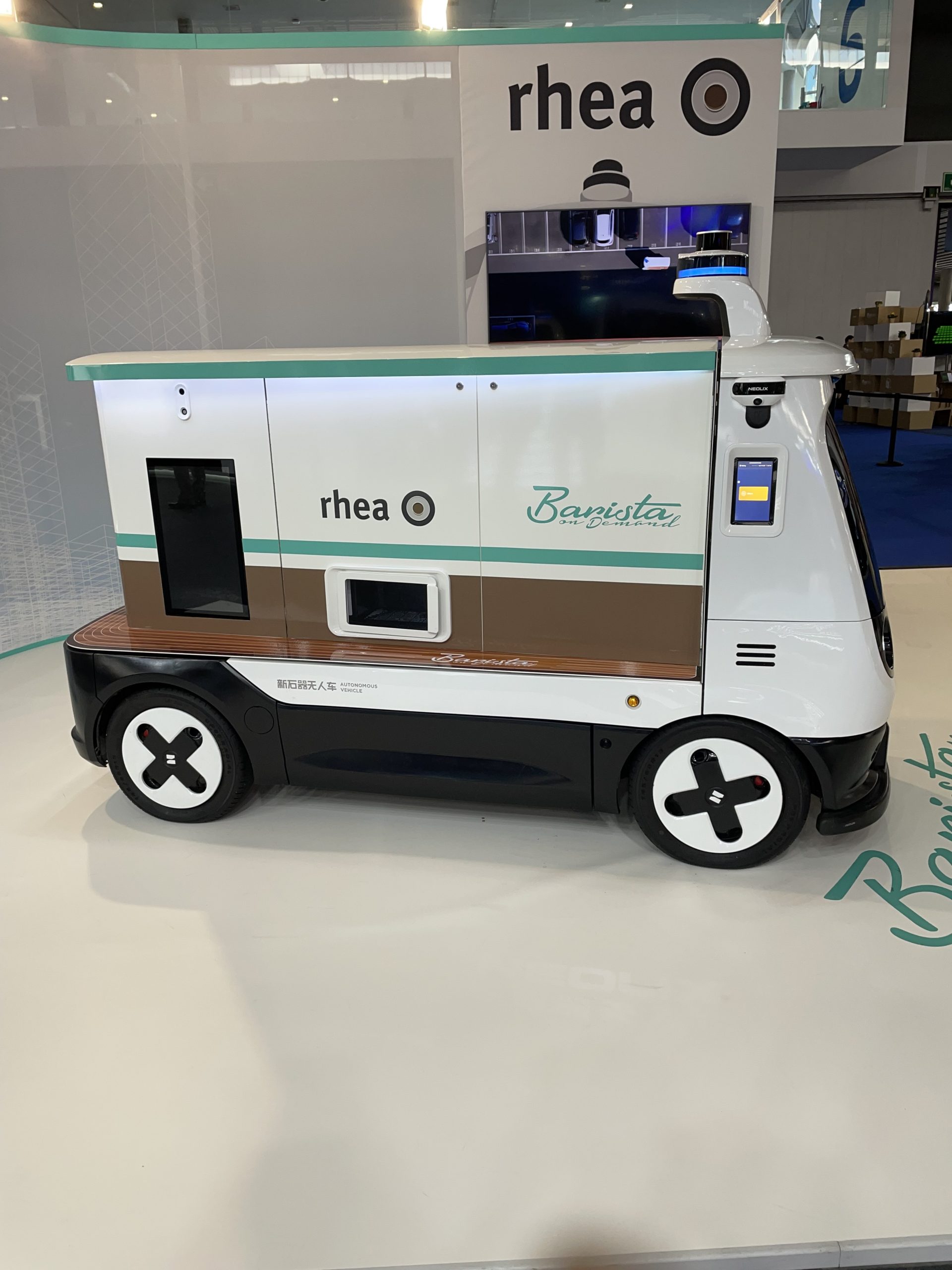
Rhea autonomous barista
Last but not least of the cars was Alef’s flying car. The design reminded me of a drone with a small bubble for the driver. The concept videos were great, shame we didn’t see it actually flying at the event. While it might be good for daily commute, you’d still need another car if you actually had to transport multiple people or any equipment.
MediaTek Dimensity Auto Cockpit
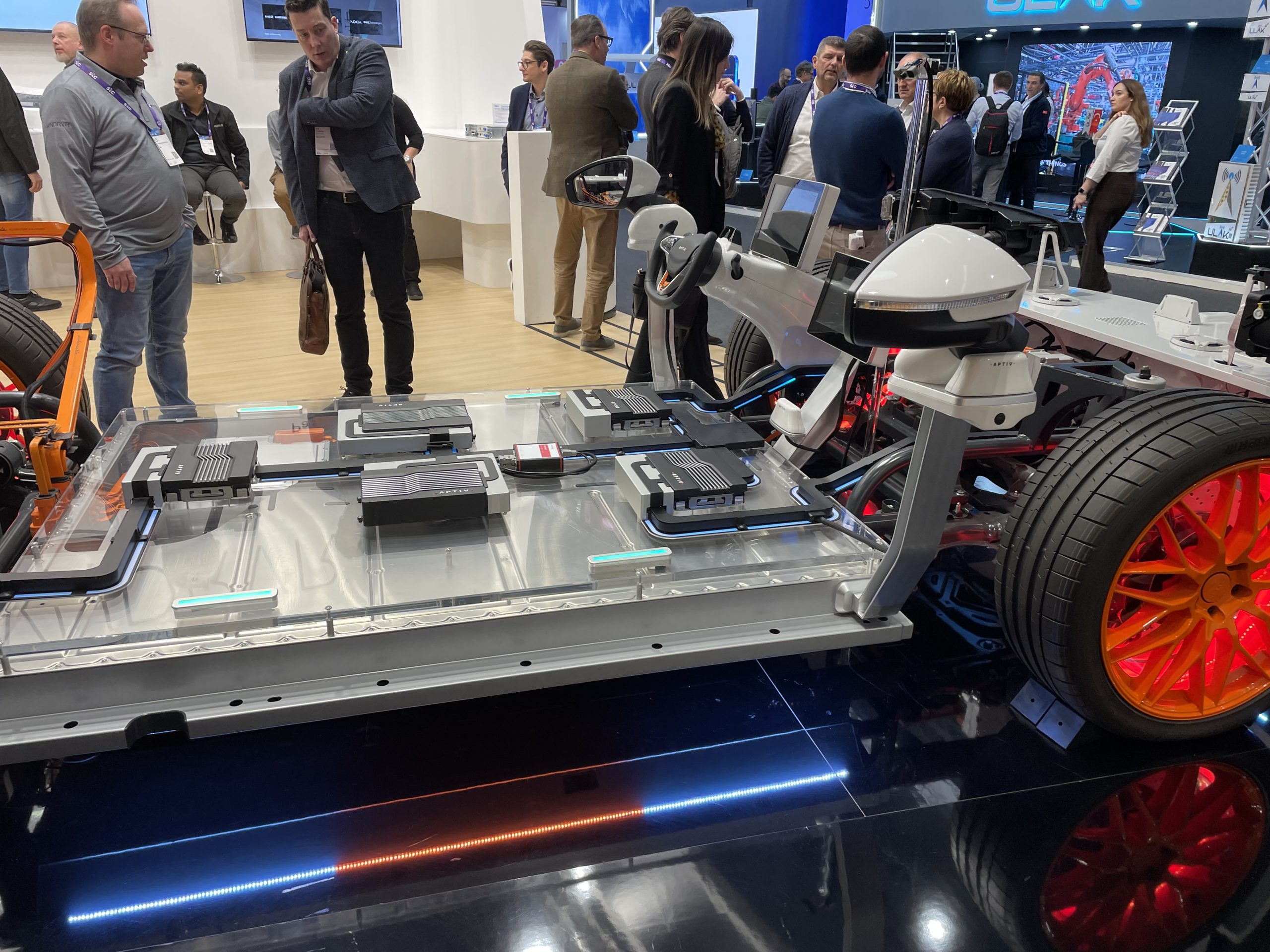
Wind River and Aptiv v2X system showcase

XIAOMI SU7 Electric Vehicle

Alef Flying Car
Robocore’s Temi attached with screens and projectors
On the healthcare side, we heard about the challenges of data protection. One of the big problems is the consistent setup for the use of health data. European Data Health Space regulation by the EU is one step to the right direction. It at least tries to create a European ecosystem which has common guidelines for standards, infrastructure, sharing and encryption. An excellent point raised by the speakers though was that while health data can be anonymized, in healthcare, it is often not useful or even possible when we have to do targeted care for each patient. A question was also raised whether other countries should follow the example set by Spain about sharing patient data. Based on my experience in a couple healthcare related research projects, I would say no. Of course, it allows us to share data more easily, but there’s a reason why elsewhere the regulations are stricter. Though some kind of middle ground between Spain and Finland for example, would be great, at least from a research standpoint, to offer easier access to data, but still ensure that the data is safe.
Back on the robotic side, Seabots’ SB100 Pro offered a great tool for marine data collection. Its comparably low price point, compact size and capacity to add any kind of sensors, promise it to be a useful tool for any company wanting to collect data at sea. Robocore Technology presented their multi-purpose Temi robots, which were running around the area near the booth, available for interaction during the event. While they market it also for home use as a personal assistant, I’m still a bit hesitant to expect sudden rush to buy these robot butlers. But a fun addition to the catalogue, nevertheless.
Seabots SB100Pro Marine data collection robot
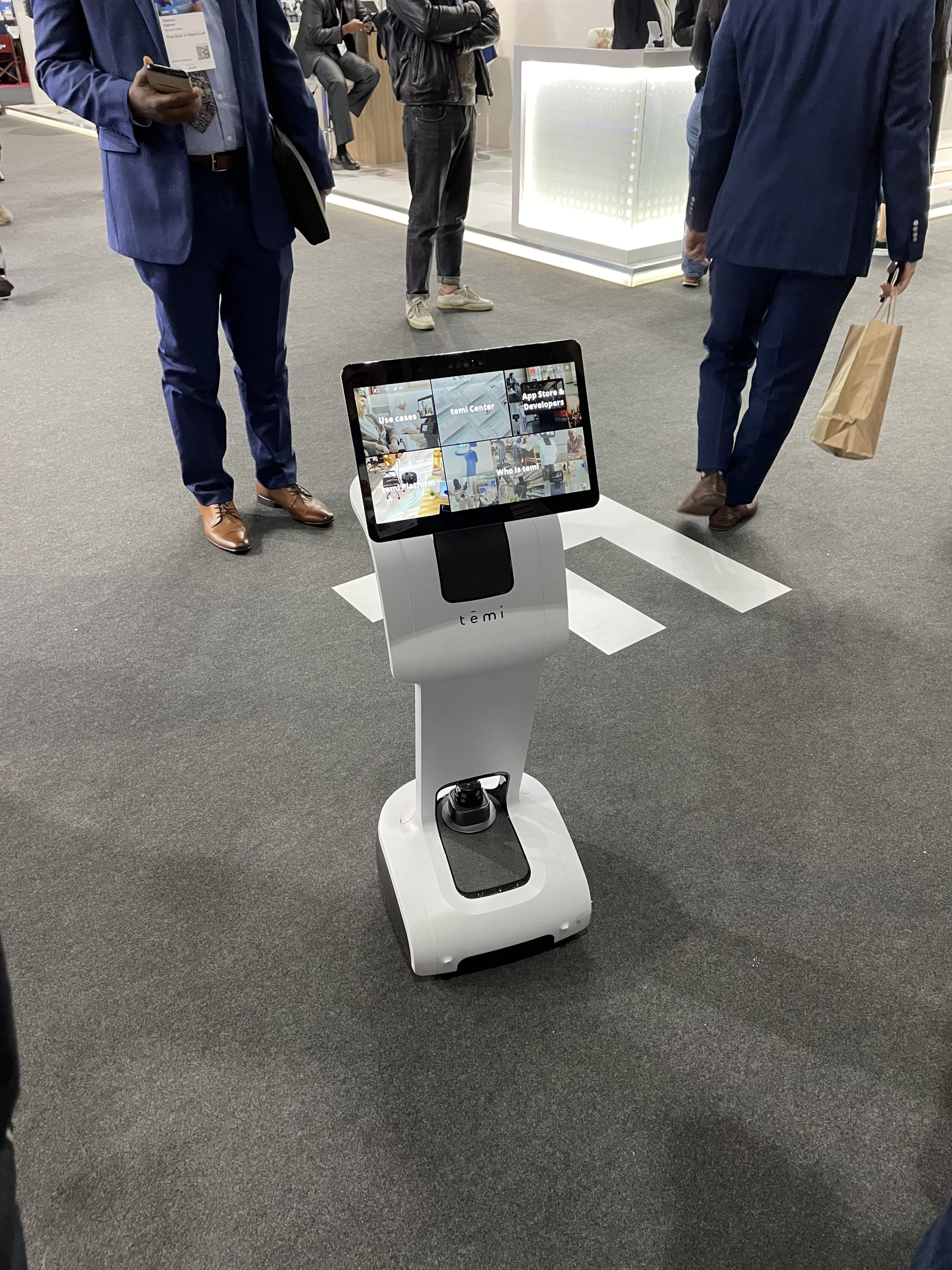
Robocore Technology’s Temi personal assistant robot
During the event, there was a lot of discussion on data as well. Capgemini’s Marina Geymonat reminded everyone, that we should move on from singular use cases and proof of concepts with AI to building a company-wide strategy on AI, and how to utilize it in different sectors. For this to be viable, a company has to understand what kind of data they have available, what it contains and how to use it. Steve Sobel from Databricks took this one step further and that “the winners in any industry are data + AI companies”. He called this the Brave New World of Data, which requires three steps from companies: 1. Unified data platforms, 2. AI-readiness and 3. Data accessible to your whole ecosystem (for monetization of data).
To close the day, we heard Meta’s Hiral Modi, Hiren Bhinde and Mitesh Dave discuss the role of wireless networks in immersive VR. While they didn’t bring anything especially new to the discussion, the interesting viewpoint Meta had on networking was to ecosystem of devices they are planning to build. A wireless network shouldn’t be thought of as a network for the device. It is a network around the device, which allows one to bring all kinds of peripherals to the same network for seamless connection. Also, while they didn’t confirm anything, they did open up the discussion on the possibility of having mobile network capabilities in the next generation of headsets.
Panel discussion on Meta and wireless networks
On Wednesday evening, I had the opportunity to attend NEXR BCN 2024 event organized by Inmersiva XR, invited by my fellow XR4Europe director, Lorena Gonzales. The event was great, excellent food and drinks, and I was able to meet with several new faces, with whom we’ll plan to collaborate in the future. First of all big thanks to Ricard Gras of Captic.io for introducing me to the best of BCN. And shout out to Dirk Figge from Photon, Mariia Tintul from Startup Wiseguys, Maud Clavier at VRROOM and many others.
Find more of our news in the News section.
Follow us on social media for more posts: Facebook | LinkedIn | Twitter | Instagram
